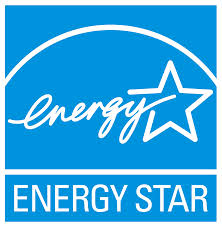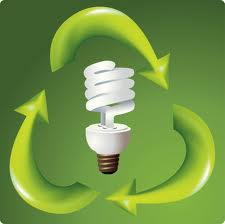Lighting Recycling Tips
As you know, Olivia and Carter are very concerned with reducing the amount of plastic pollution communities generate and they are always on the lookout for ways to find alternatives to using plastic or for more ways to recycle plastic. Recently we were contacted by Wendy Weinert (WWeinert@outreach.bellacor.com) regarding her suggestions on how we can recycle lightbulbs. Check out her article and let us know your thoughts:
Lighting technology is currently in the midst of revolutionary change. The incandescent light bulbs that were the standard for a century are being phased out in favor of more cost-effective and eco-friendly versions. These modern lighting methods include the compact fluorescent lamp (CFL) and the light-emitting diode (LED). CFL bulbs are becoming especially popular as governments worldwide pass laws meant to curb incandescent lighting usage. CFLs provide up to five times the energy efficiency of traditional bulbs and last up to fifteen times as long. They cost more than incandescent bulbs, yet are less expensive than LEDs. The savings on electricity over the life of a CFL is about $40 dollars compared to an incandescent bulb. These new innovations have many advantages, but there are also new environmental problems associated with the bulbs that are now shining through homes and offices around the world. The controversy over CFLs stems from the mercury vapor they contain, which is an essential part of their lighting mechanism. It’s therefore important to dispose of these long-lasting light bulbs in certain ways. These issues can be dealt with in a responsible and low impact manner if consumers and business owners know the importance and methods of lighting recycling.
 Fortunately, these green recycling methods are increasingly common and hassle free. Many companies and municipal agencies that pick up trash or recyclable garbage have specific policies for dealing with CFLs. If their customer service agents say that these services are not available, the next step is to contact the local government agency responsible for waste management. Many hardware, furniture and discount stores that sell lamps and light bulbs have begun take-back programs that allow customers to drop off used CFLs for free. Consumers can write letters to their government environmental agencies, trash pickup services and corporate retailers requesting that they begin offering CFL recycling services. There are also companies that accept CFL bulbs through the mail and dispose of them in an environmentally secure manner, but these services can be quite costly. All CFLs should be stored in a box and packed with bubble wrap or other soft padding to prevent cracking before they are sent to a recycling center.
Fortunately, these green recycling methods are increasingly common and hassle free. Many companies and municipal agencies that pick up trash or recyclable garbage have specific policies for dealing with CFLs. If their customer service agents say that these services are not available, the next step is to contact the local government agency responsible for waste management. Many hardware, furniture and discount stores that sell lamps and light bulbs have begun take-back programs that allow customers to drop off used CFLs for free. Consumers can write letters to their government environmental agencies, trash pickup services and corporate retailers requesting that they begin offering CFL recycling services. There are also companies that accept CFL bulbs through the mail and dispose of them in an environmentally secure manner, but these services can be quite costly. All CFLs should be stored in a box and packed with bubble wrap or other soft padding to prevent cracking before they are sent to a recycling center.
Many people still have old-fashioned incandescent bulbs in their light sockets or stored in a closet. These bulbs do not contain toxic waste and are not recyclable, but creative people still manage to avoid sending them to a garbage dump. Upcycling is a trendy means of finding uses for products that can’t be recycled. The clear glass and thin metal rim of classic light bulbs are perfect for making a variety of elegant and unique home decorations. These include tiny snow globes, candle holders that let the bulbs continue to give off light, and dainty flower vases. Large bulbs can even be turned into aquariums for baby fish. For the artistically inclined, light bulbs can be painted as cartoonish animal characters. A couple more fun ideas for upcycling light bulbs are miniature pots filled with soil, pebbles and plants, or necklaces made from small bulbs attached to chains.
not contain toxic waste and are not recyclable, but creative people still manage to avoid sending them to a garbage dump. Upcycling is a trendy means of finding uses for products that can’t be recycled. The clear glass and thin metal rim of classic light bulbs are perfect for making a variety of elegant and unique home decorations. These include tiny snow globes, candle holders that let the bulbs continue to give off light, and dainty flower vases. Large bulbs can even be turned into aquariums for baby fish. For the artistically inclined, light bulbs can be painted as cartoonish animal characters. A couple more fun ideas for upcycling light bulbs are miniature pots filled with soil, pebbles and plants, or necklaces made from small bulbs attached to chains.
Sometimes, it’s necessary to deal with the dangerous mercury inside of CFLs before the bulb has even burned out. The curvy white tubes that form CFLs are made of delicate glass, so it’s possible that one can break. If a CFL bulb is dropped, smashed or broken by some other means, there are essential actions that must be made, and others that must be avoided. Make sure that everyone leaves the room where the spill occurred. Turn off the central heating and air conditioning to keep the mercury vapor from wafting into the air. After ten minutes, return to the room and use cardboard to scrape up the debris. Then thoroughly clean the remaining shards of glass by pressing down on them with tape and wet paper towels. Seal all of this material in a glass jar or sturdy plastic container. Never vacuum the area before completely cleaning, as this can spread the toxic mercury vapor into the air. Store the container in a secure place, far from children, until it’s possible to turn it over to a recycling service or government agency. The hazardous mercury in CFL light bulbs can cause damage to many critical organs, including the brain, kidneys and lungs. Even bulbs that are not broken in a home will eventually break in a garbage truck or landfill if not disposed of properly, allowing the mercury to spread into the groundwater and air. That’s what makes lighting recycling so important.
To learn more about lighting recycling, refer to the following links.
- Cleaning Up Mercury Spills from the Environmental Protection Agency
- Fluorescent Light Bulbs: Buy Them, Use Them, Recycle Them
- Cleaning Up Spilled Mercury in the Home
- Energy Star
- Recycling Halogen Lamps
- Lighting Tips from Energywise
- Disposal of High-Efficiency Light Bulbs
- Recycling Hazardous Waste
- Disposing and Recycling Light Bulbs
- Why Recycle?
- How to Dispose of CFLs
- R ecycling Light Bulbs
- Fluorescent Bulbs and Tubes
- Campus Recycling from Northern Illinois University
- Recycling Your Light Bulbs
- What to Do with Fluorescent Light Bulbs
- Save Energy and Recycle
- Fluorescent Lighting from Interwaste
- Association of Lighting and Mercury Recyclers
Wendy Weinert is the Digital Marketing Specialist at Bellacor and is someone who is passionate about both digital and social media. Her life philosophy is two fold – if you love what you do, you will never work a day in your life and that if you want something, don’t wait for life to hand it to you; it is up to you via ambition and dedication that you will achieve your life’s goals.
To read more great articles from Wendy, follow her link here: http://www.bellacor.com/articles.htm?author=Wendy%20Weinert
We wish to thank Wendy for all the great information and we look forward to hearing your comments.

